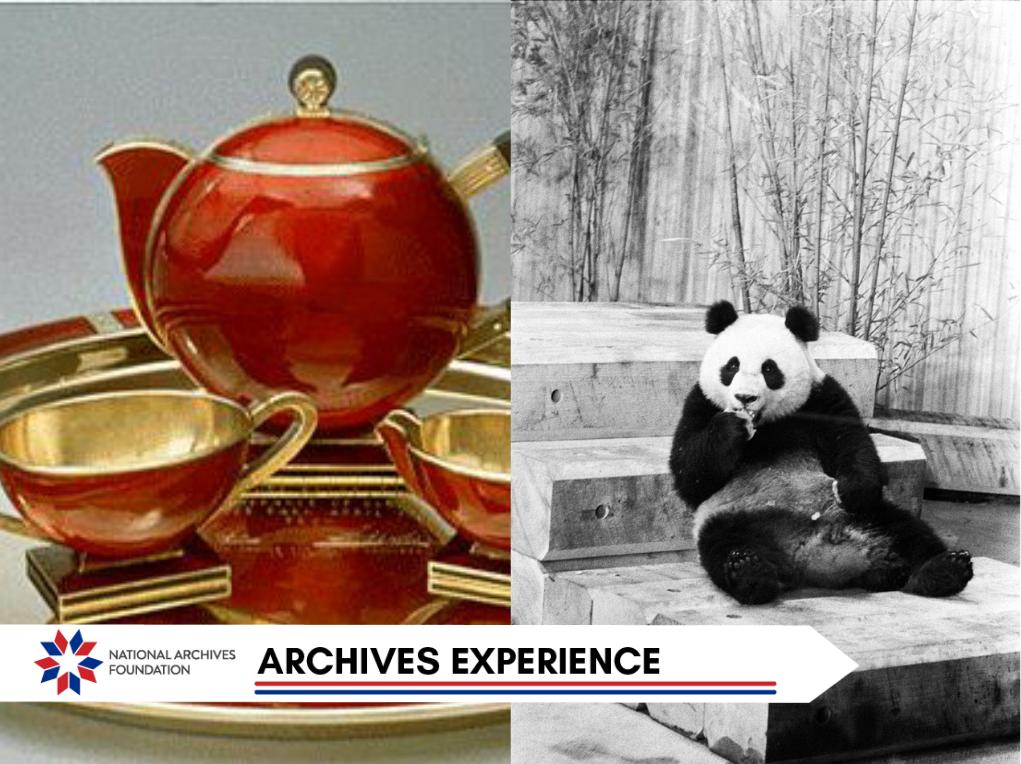Snapshots and Snap Counts: Football in the Archives
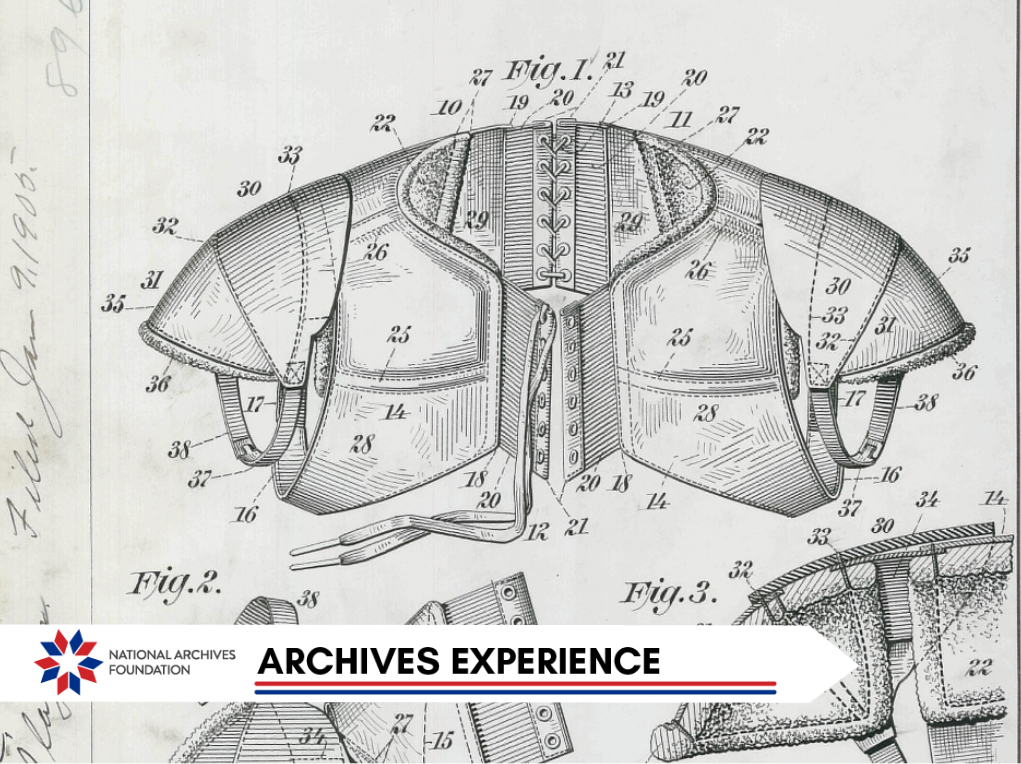
As the crisp autumn air and return of the pumpkin spice lattés signals the arrival of football season, it's the perfect time to delve into the rich history of this beloved sport. Football has evolved from its early beginnings into a major cultural phenomenon, involving some very iconic and even presidential figures along the way. Let’s explore the legacy and evolution of football through some of these captivating tidbits from the Archives.
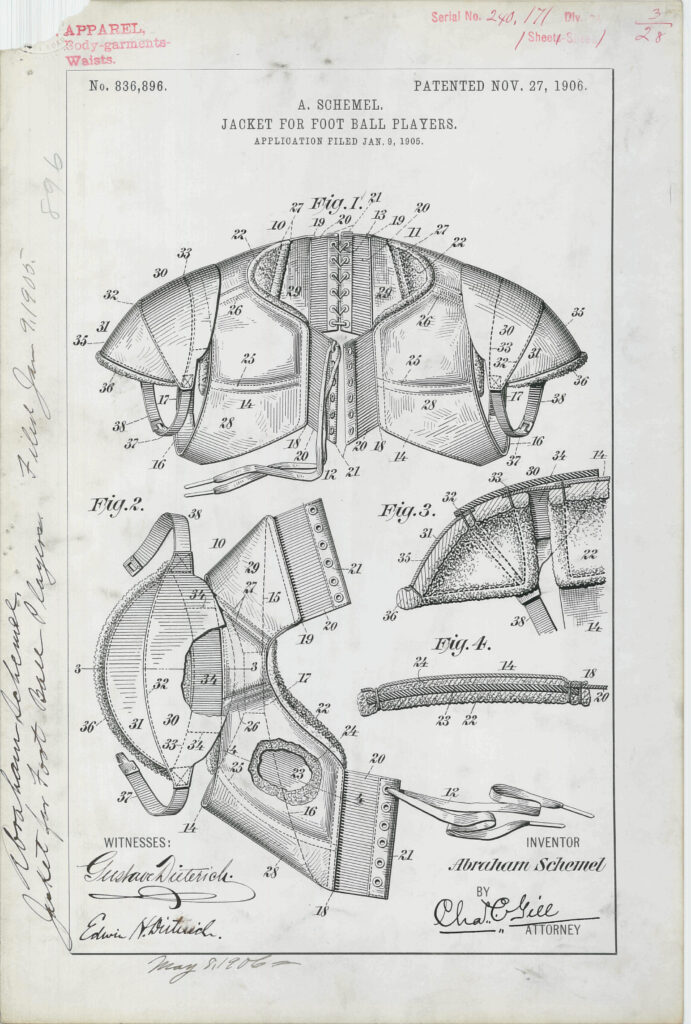
Patent Drawing for A. Schemel's Jacket for Football Players, 1906
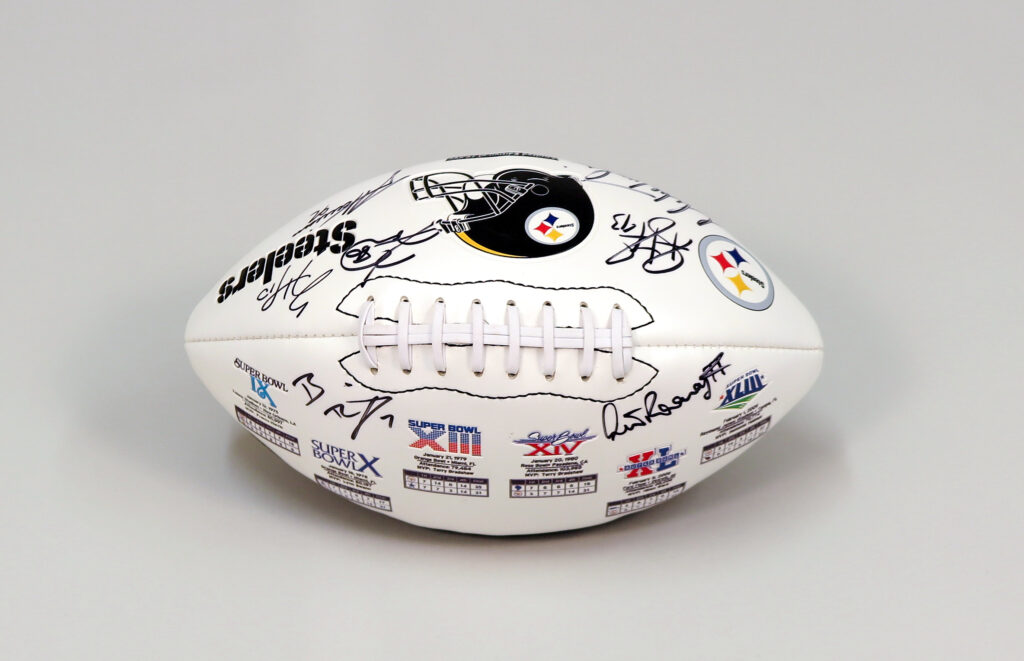
Early Turf
American football is a rather young sport, first developed in the late 19th century. The game derived many of its rules and general gameplay from both rugby and soccer, which were popular across Europe. The first full game featured Rutgers and Princeton in 1869, although the rules reflected soccer more than the sport many of us are familiar with.
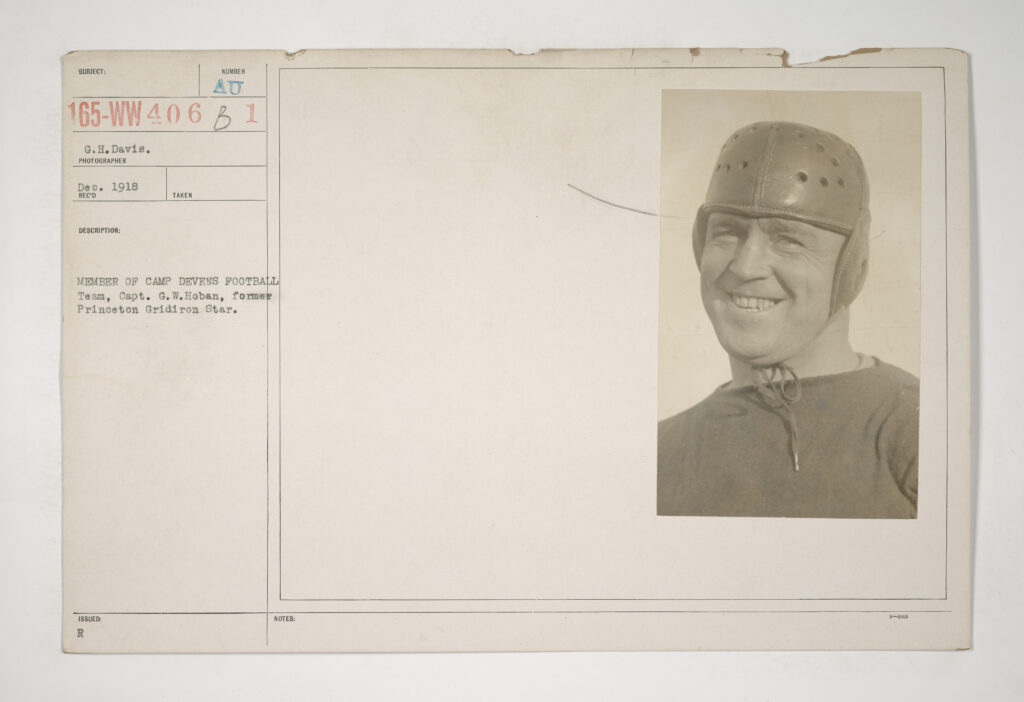
For the most part, players weren’t wearing protective gear, including helmets. One particularly dangerous play was called the “flying V,” in which players lined up in a V formation and ran directly at the player on the opposing team who was carrying the ball. In 1894, the Army-Navy game became so violent, with so many fistfights on the field, in the stands, and even between high-level members of the military elite who were attending the game—one brigadier general and one rear admiral nearly fought a duel over the game—that President Grover Cleveland banned the annual contest between the two academies.

The gameplay style most Americans now think of is mostly thanks to Walter Camp, a Yale player (1876-1881) turned head coach (1888-1892). Things like snap-backs from center and the system of downs can be directly attributed to him. Maybe most notably, Camp replaced what’s known as a “scrum” in rugby with a line of scrimmage, meaning one team starts with the ball in possession without contest.
Camp is also responsible for standardizing these rules and creating an early version of an intercollegiate league. By creating a uniform system of rules, the sport gained widespread popularity and organization, which ultimately led to Yale constructing its own football stadium, now the second oldest in the U.S.
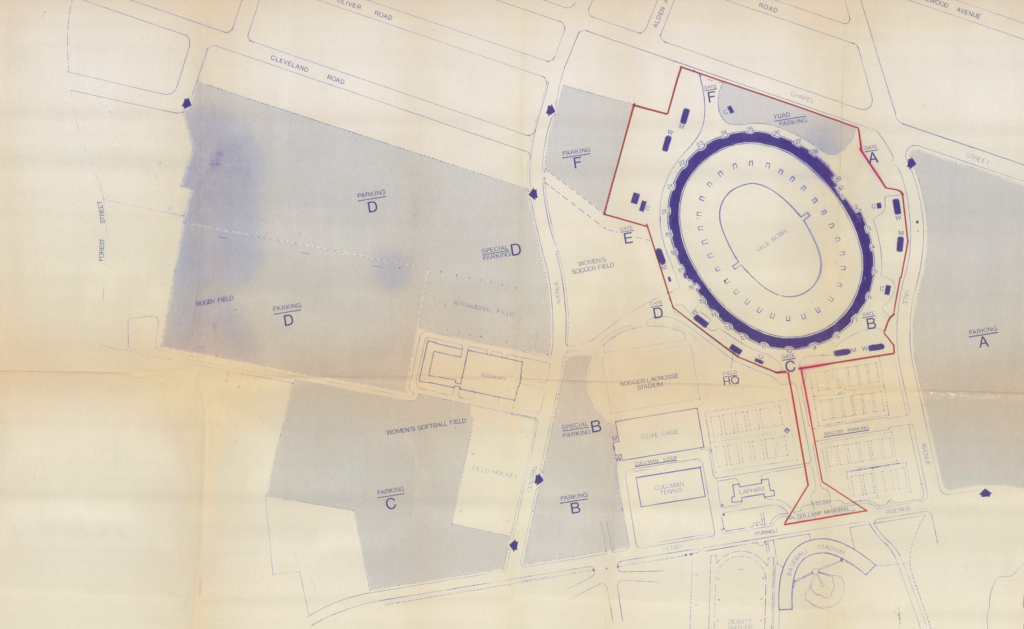
Map Showing the Yale Bowl, 1987
From the Gridiron to the Oval Office
Many 20th- and 21st-century U.S. Presidents have played football, with one of the earliest being Franklin D. Roosevelt. He was not a particularly gifted athlete, playing second-string at his school. Despite achieving a high score on Harvard's entrance exam and graduating in three years, FDR did not develop a strong passion for football, although he made occasional appearances at games in his governmental capacities.
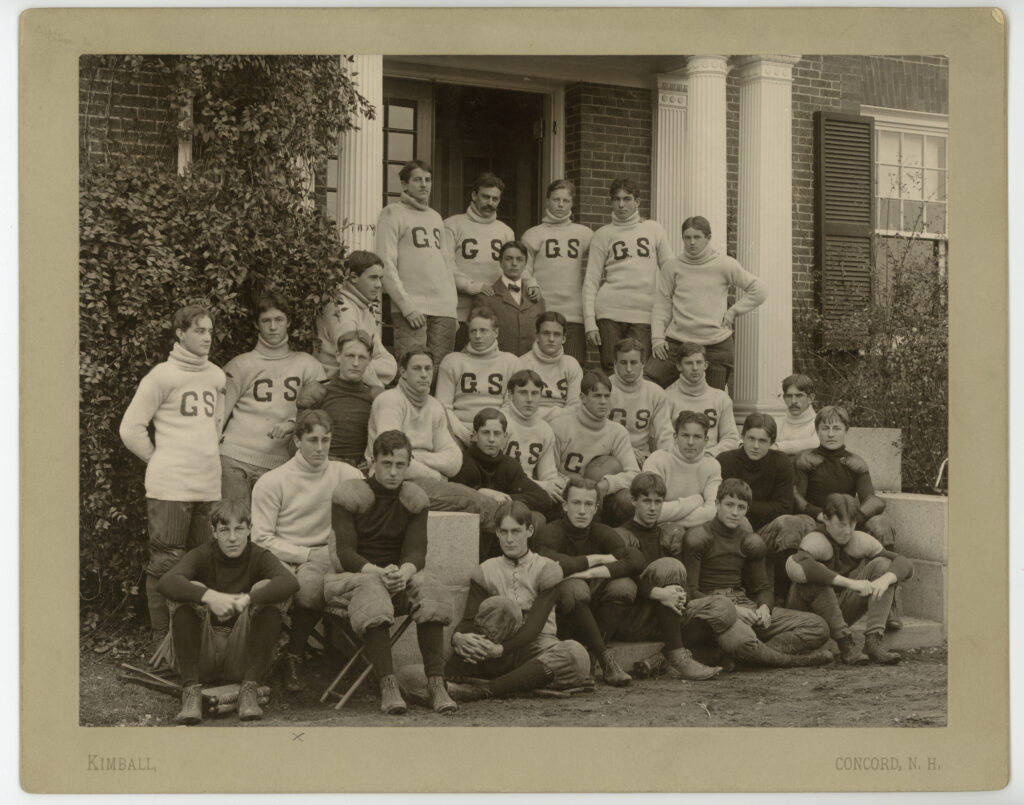
The next known Presidential player was Dwight D. Eisenhower, who played football at the U.S. Military Academy at West Point. His playing career was cut short by an injury, but he remained deeply involved in the sport, later coaching at a small college and several Army teams.

Dwight David Eisenhower Kicks a Football at the U.S. Military Academy at West Point, New York, 1912
President Richard Nixon played on both his high school and college football teams, although he was benched for much of his collegiate career. Nixon’s passion for football persisted into his presidency, during which he eagerly attended the celebrated "Game of the Century" between Texas and Arkansas in 1969. Nixon even honored Vince Lombardi by speaking at his funeral, admiring his focus on fundamentals both on and off the field.
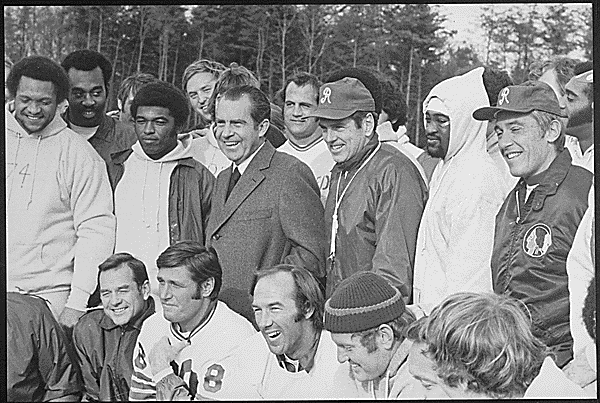
Easily the most recognizable player who actually got some serious NCAA playing time in was President Gerald R. Ford. Representing the University of Michigan, Ford played as a standout lineman and earned All-American honors. A talented athlete, Ford was offered a contract to play for the Green Bay Packers, although he ultimately turned the offer down.
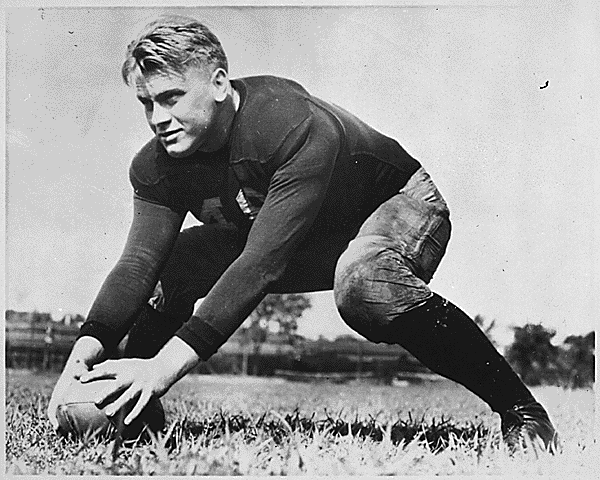
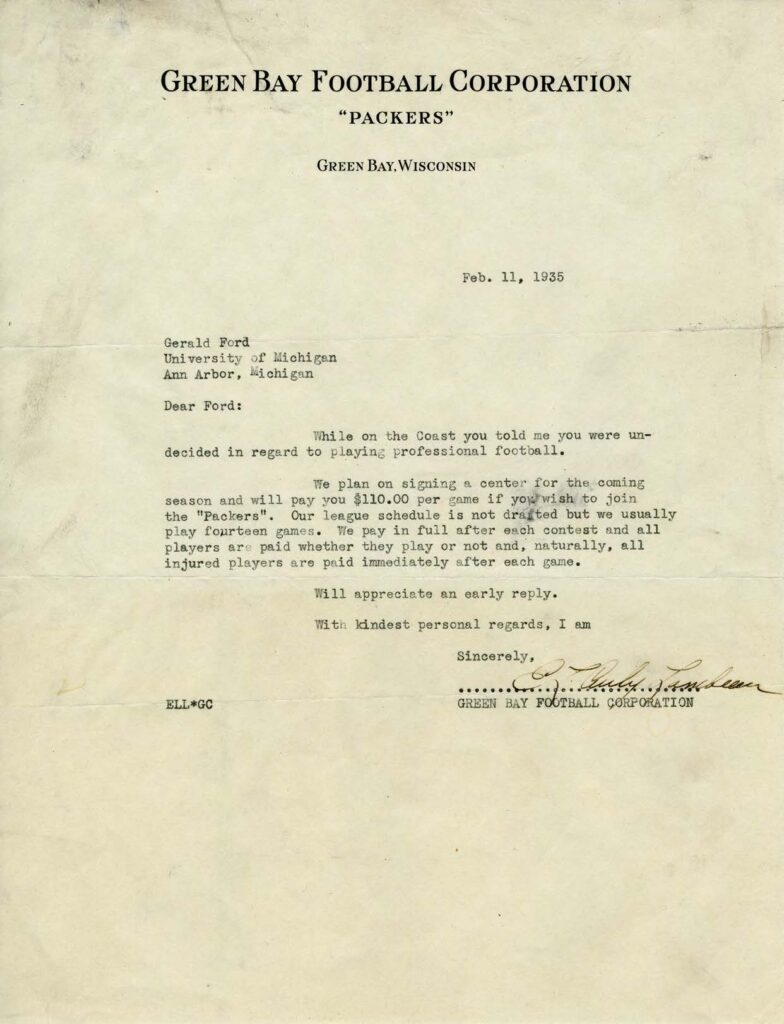
Some other Presidents who spent some amount of time playing the sport include Theodore Roosevelt, Herbert Hoover, and Woodrow Wilson. Regardless of their actual playtime or experience, almost every President has paid homage to this quintessentially American activity while in office, some of which you can check out below.
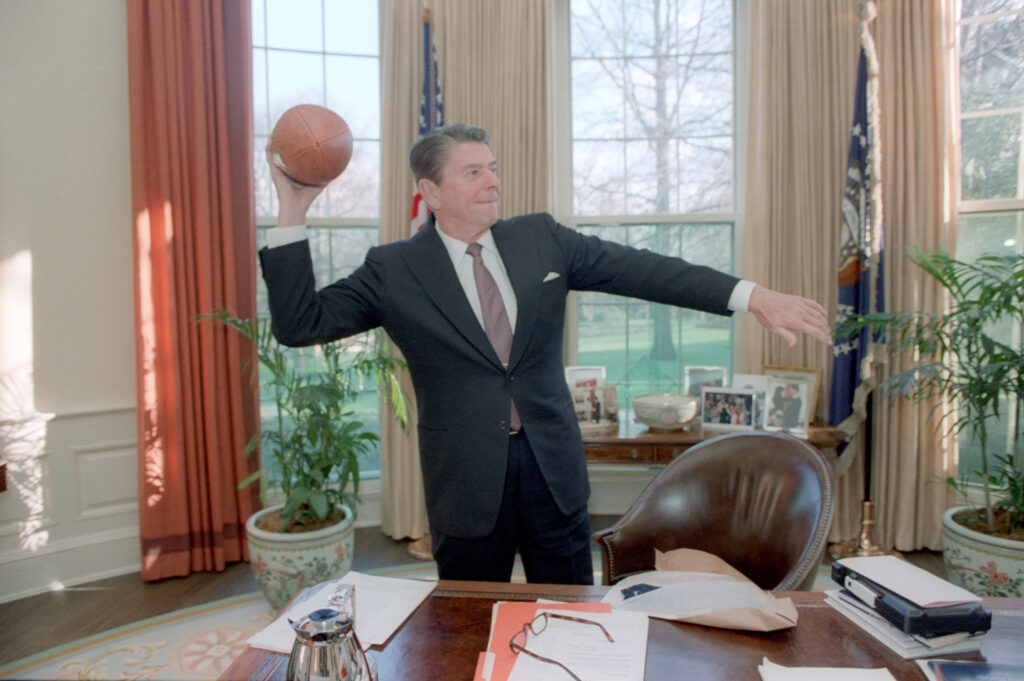
President Reagan throwing a USC football in the Oval Office, March 26, 1982
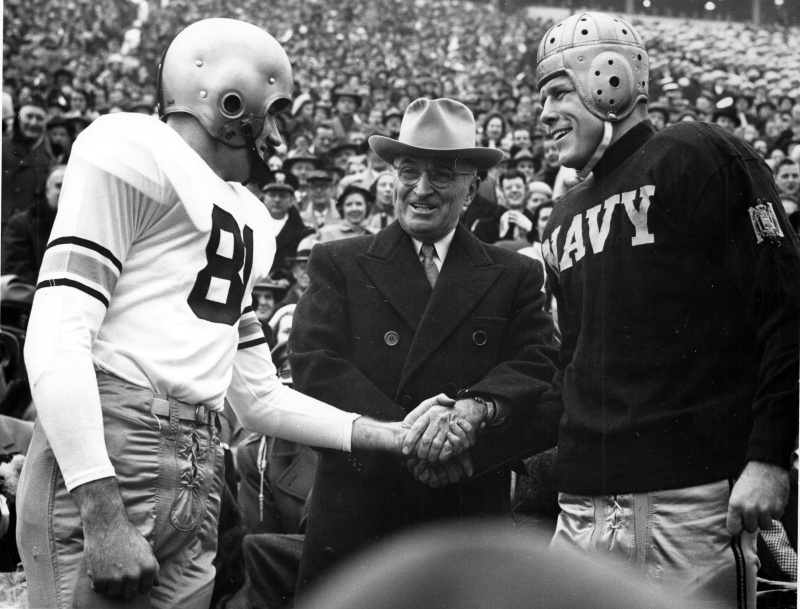

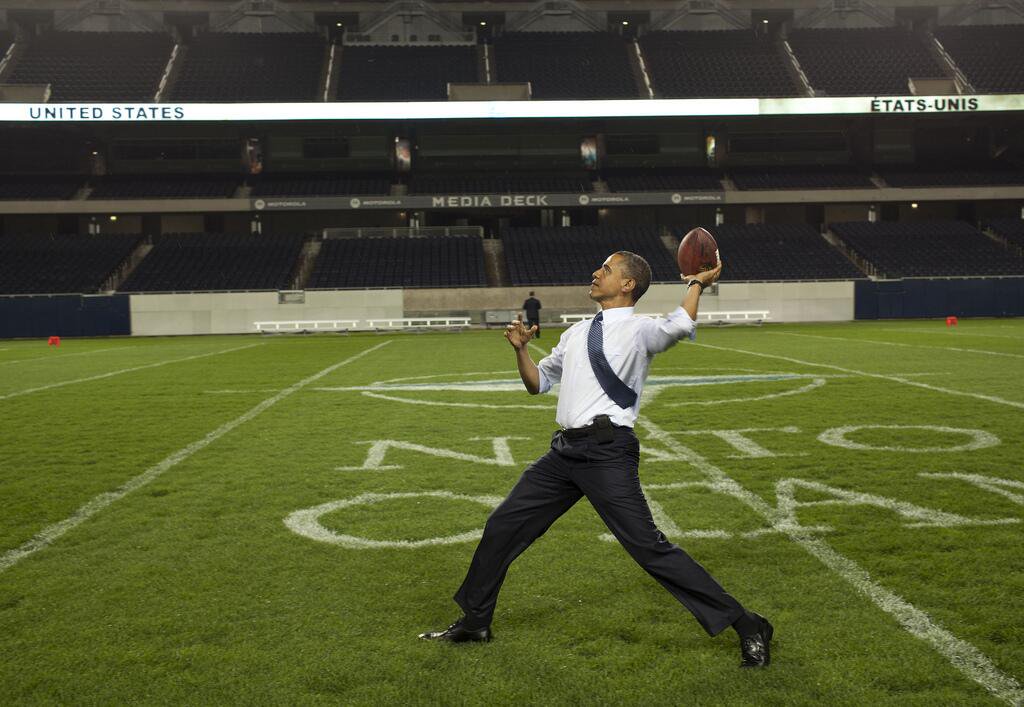
Related Content
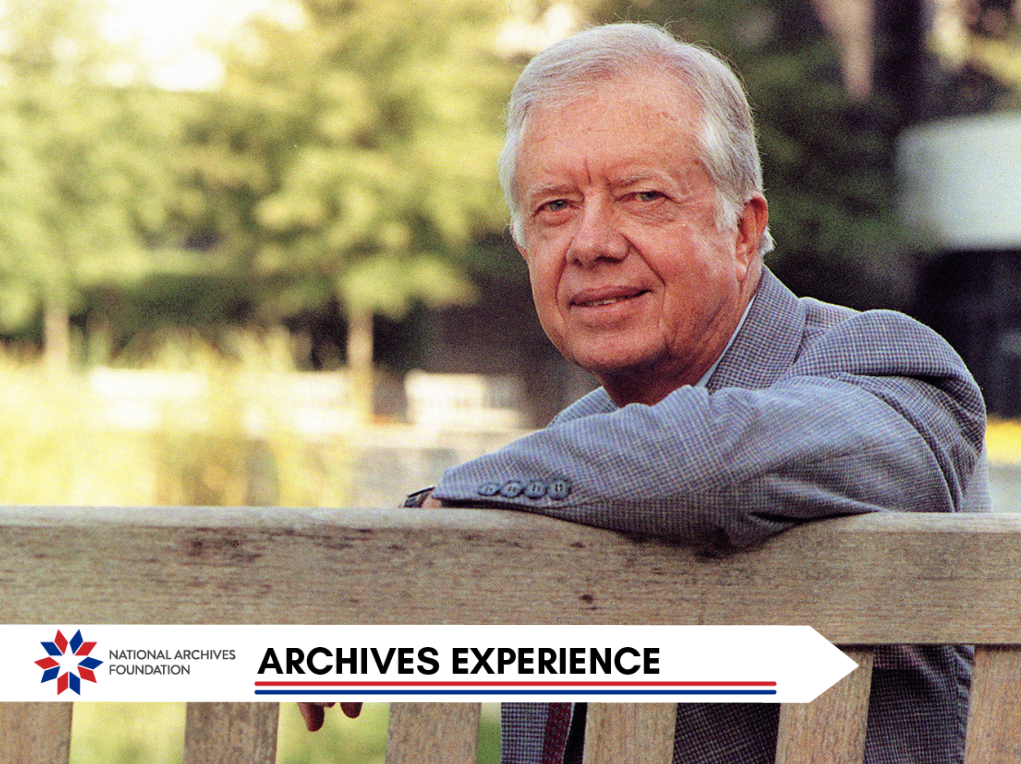
Remembering President Jimmy Carter
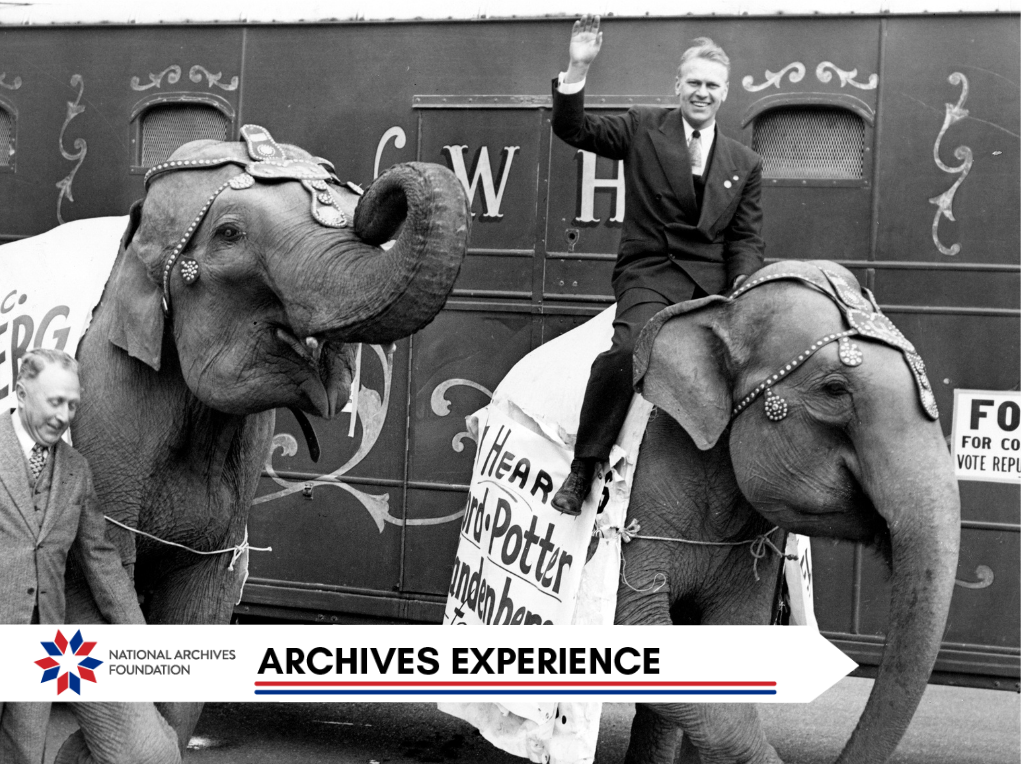
The Unelected President
